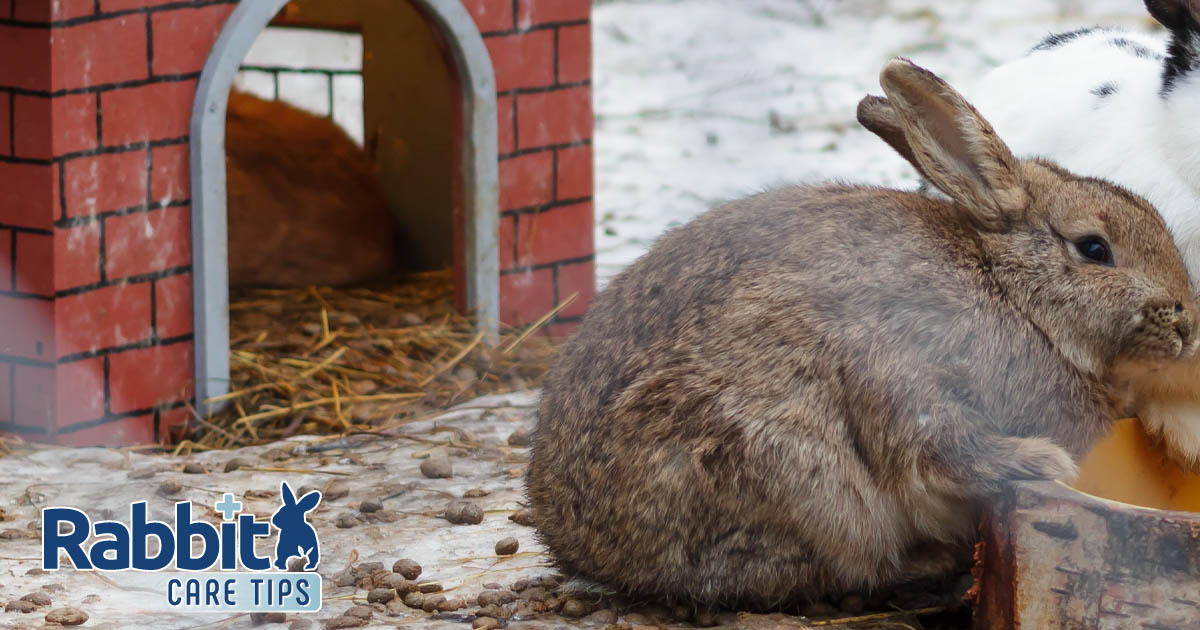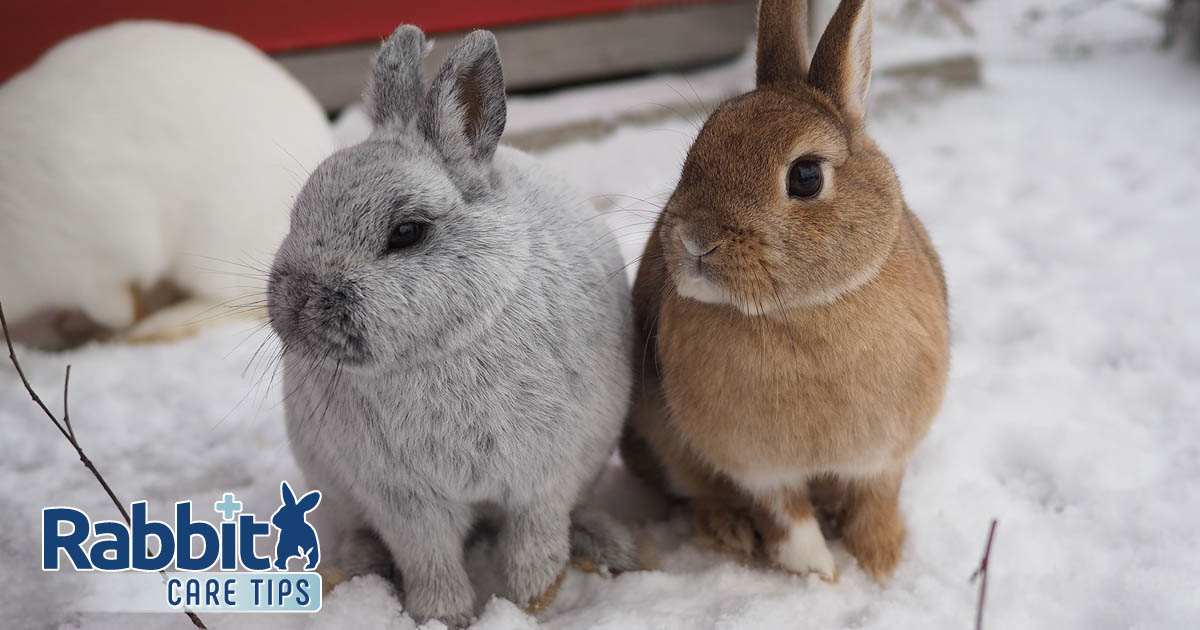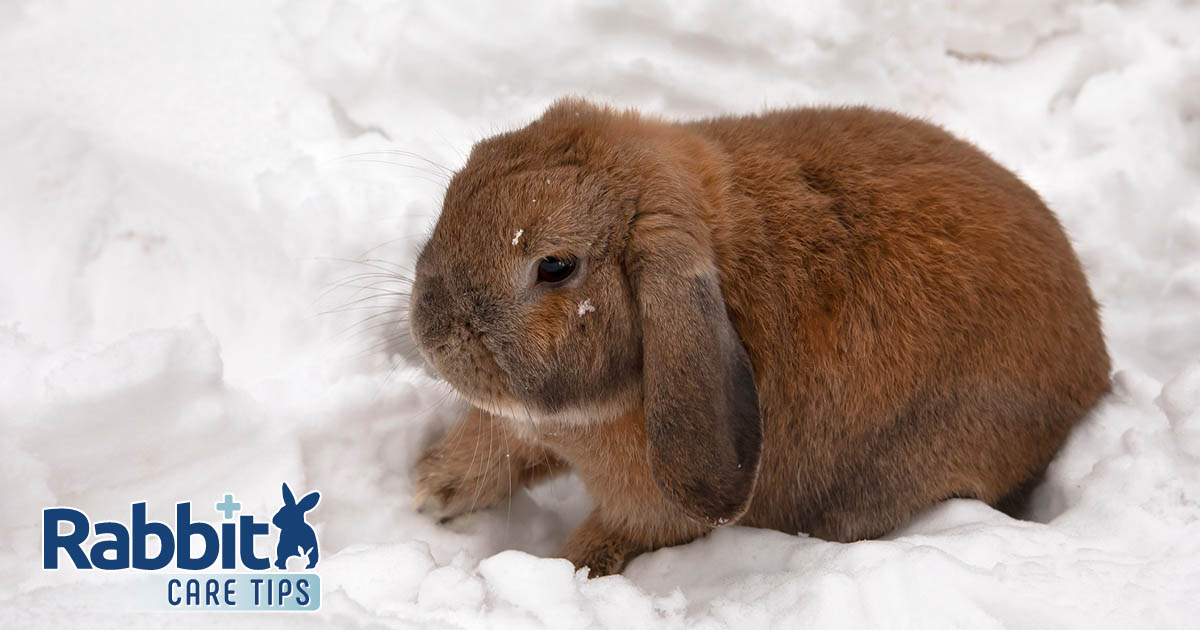Much like any other animal, a rabbit also needs extra care and attention amidst the harsh winter. But don’t let their fragile and cute appearance fool you.
Rabbits have the capability to build an additional layer of fat inside their body to keep them warm in the chilly winters. That said, the kind of nutrition they receive is also a good determiner of how well they can adapt to heat.
All in all, rabbits have an appreciable level of tolerance against winters. But in certain cases, when the temperature falls below 20 degrees Fahrenheit, they may begin to feel some discomfort.
Let us find out the ideal temperature range your rabbit should live in and how you can prep your bunny for the upcoming winter season.
How Cold Is Too Cold for a Rabbit?
Rabbits are diurnal creatures that thrive in colder climates. They can withstand temperatures as low as 30 Fahrenheit with ease. They will be okay even in near-freezing circumstances if they have access to a well-insulated hutch.
You should also keep checking their internal body temperature at times, which should always lie between 101 F and 103 F. Anything lower than that means that they are feeling too cold. Prolonged exposure can even lead to serious problems.
As winter approaches, the days become shorter. Precipitation rises, and the temperature drops. In such cases, rabbit owners need to take various considerations to make sure that their pet stays comfortable.
The temperature tolerance for a human being and a rabbit is quite different. While you may be shivering at a certain temperature, your rabbit may just be fine due to the additional layer of fat it has.
In some cases, they too can feel too cold – illness and extreme temperatures, for example. A quick way to check how they are feeling is to feel their ears. If their ears are overly cold or hot, then there are chances that your bunny might be in distress.
Types of Winter Housing for Rabbits
Indoor Housing
Rabbits are becoming more popular as house pets among pet owners. Indoor dwelling eliminates many of the additional concerns that arise when they live outdoors.
Even though the rabbits stay warm indoors, keep in mind that they already have a fur coat to keep themselves warm. To avoid the danger of overheating, indoor rabbits should be kept in an area that does not contain a heat source.
Even if your house does not contain a dedicated heating unit, indoor temperature mostly lies between 35-50 degrees Fahrenheit in most cases, which is totally fine for your rabbit.
There must be enough air in the rabbits’ living quarters as well as a clean and dry environment.
Pros of Indoor Housing
- Minimal changes required in order to make adjustments.
- Crocks and water bottles do not require regular refilling.
- Zero probability of precipitation reaching the living area of rabbits.
Cons of Indoor Housing
- You might have to lower the heat at all times to keep your bunny out of danger, which is not so comfortable for your own self.
- A rabbit requires proper ventilation even in a harsh climate.
Outdoor Building Housing
This mainly refers to the rabbits who are housed in a barn, a shed, or some other free-standing structure.
The market has a lot to offer when it comes to year-round shelter for rabbits. If you are on the lookout for a cage, your best bet would be to go with the ones that are made with wire, as the open enclosure provides plenty of ventilation.
Many pet owners also build additional fences around the cage. A smarter way to avoid this is to purchase a fully enclosed shelter that will safeguard your pet from rain, wind, and snow.
Even if you have got the best case on your hands, don’t forget to check on your pet regularly if the temperatures fall below freezing point. The only downside to outdoor living shelters is that the water tap and pipe inlets often freeze due to the low temperatures.
You can fix this issue if you keep refilling the water every 4 hours or invest in heated water bottles, which can be plugged in and heated.
All the wild rabbits have survived through thousands of years using this method of living. They make burrows underground and shelter themselves from strong winds and predators.
You can also put some Timothy hay beside your rabbit’s bedding so that they have something to graze on. All you need is to create a weather-proof enclosure for your rabbit, and then you can easily keep it outdoors.
Pros of Outdoor Building Housing
- Guarded perimeter provides insulation from precipitation.
- Rabbits are biologically more accustomed to outside temperatures.
Cons of Outdoor Building Housing
- Water may freeze often.
- Increased appetite due to spiked metabolism.
Outdoor-Only Housing

If you plan on going with this option, you will need to ensure two things:
- The bedding stays dry at all times.
- No strong gusts should flow in the direction of their habitat.
Wild rabbits have developed in a way that allows them to withstand sub-zero temperatures without any problem. Given that you provide them with an enclosed shelter with one-walled ventilation and apt nutrition, they should easily be able to thrive in winter.
You can also install a rollable tarp on the top of their shelter to trap the heat inside during nighttime. Much like outdoor building housings, you will need to keep an eye on the water supply and drinking mechanisms.
Rabbits need to eat on a regular basis so that their metabolism stays sharp. To facilitate this, you can install a nest box in the vicinity and put some hay or fruits in it from time to time.
Pros of Outdoor-Only Housing
- Natural habitat promotes mental development.
- Good ventilation.
Cons of Outdoor-Only Housing
- A constant need to change the water.
- Vulnerability to infestations stemming from the surrounding area.
Winter Care for Rabbits
In case your rabbit gets too cold, here are some tips that might be of good use to you:
Consider Moving Their Shelter to A New Location
If you feel your rabbit is uncomfortable in its current shelter, you can consider covering it with a thicker fence or relocating to a less windy spot. Do not bring the rabbit directly into your house, though, as the sudden change in temperature might not be healthy.
All you need to do is keep them at a temperature that is above zero. This might sound cruel to some, but this is what the natural habitat of a furred rabbit is like.
A Quick Retouch to Fix It All
Rabbit houses are typically made up of wood, which slowly starts to decay over time. Put your DIY skills to good use by sealing off the gaps in the hutch and applying some coating, followed by polishing the surface of the wooden shelter.
You can also elevate the base from the ground to prevent dampening. Just simply place some bricks or planks beneath the surface, and you are good to go.
Dampness is one of the biggest enemies of your rabbit’s abode. Wet surroundings in winter may even lead to fever. To ensure that the inner walls of the hutch are always dry, you can stick a thin plastic film to the wall, followed by covering the edges using some hay.
Hutch Coverings
To top off the shelter with the final layer of protection, you can cover the shelter with custom-made thick fabrics to trap the heat inside the system and prohibit airflow. A combination of an old blanket underneath a waterproof tarpaulin could also work.
Sharing is Caring
In some cases, it has been proved that a couple of rabbits were actually better at surviving lower temperatures as opposed to a single rabbit. Small animals often cuddle up against each other to share some heat and check if their partner is fine.

Purchasing a Heater Pad
Many bunny keepers like to purchase a heater pad and place them underneath the platform for some time so that the surface gets nice and warm. A good quality heater pad will cost you anywhere between $100-$300, depending upon the size.
Some Additional Tips to Ensure Their Comfort
- Make sure their water bottles and feeding trays aren’t clogged with ice. You can shift its location to a shed or a garage if your rabbit previously lived outdoors.
- If the hutch becomes damp due to winds or precipitation, you should elevate the base or get a new hutch as soon as possible to avoid the risk of high fever.
- Putting a bubble wrap on the nozzle will help maintain the water flow. This way, you will not have to change their water bottle every 4-5 hours.
- If the temperatures fall too much, you can moderate the internal temperature of the dwelling by installing some form of insulation at night.
- Instead of having to buy a custom covering for your hutch, here’s what you can do: use two broom handles to staple heavy-duty polythene to the hutch’s top. Use clips to attach each of the broom handles to the roof so that they stick to the ceiling in bad weather.
Put the bottom broom handle back into the clips at the end of the day. At night, place a blanket between the polythene and the front of the hutch. The hutch must be uncovered every morning if it is covered in this manner, though.
- When placing a heating pad inside their shelter, always make sure that you have the cover on so that the device doesn’t end up burning the hay.
- If you plan to keep your rabbit indoors during the day and outdoors during the night, then you might want to reconsider. Much like human beings, sudden temperature shifts might cause a great deal of distress to your small bunnies.
- Rabbits are better accustomed to tolerating cold as opposed to tolerating heat. Unlike human beings, they cannot sweat, nor can they pant like a dog. Thus, keeping them at a safe distance from heating devices is a must if you are keeping your rabbit indoors.
- Use some newspaper to line the sleeping area. When choosing a good bedding material, you should always pick straw over hay in cold weather. This is because straw stays warmer. Needless to say, it should also be soft and dust-extracted to avoid the risk of any potential eye injuries.
- For insulating their housing, you can put a 2-4 inch plywood frame beside the walls while leaving some gap which can later be filled with roof insulation.

